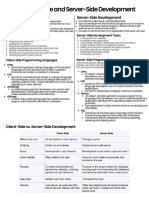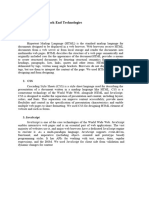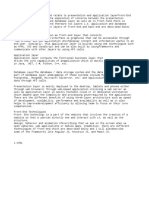0% found this document useful (0 votes)
7 views92 pagesLearning Unit Environment: 1: Set Up
The document outlines key concepts of front end and back end development in computer applications, explaining their roles and purposes in software and web development. Front end development focuses on user interaction and visual elements, while back end development involves the underlying code and data management. It also introduces Single Page Applications (SPAs) as a web app implementation that updates content dynamically using JavaScript APIs.
Uploaded by
mromain140Copyright
© © All Rights Reserved
We take content rights seriously. If you suspect this is your content, claim it here.
Available Formats
Download as PDF, TXT or read online on Scribd
0% found this document useful (0 votes)
7 views92 pagesLearning Unit Environment: 1: Set Up
The document outlines key concepts of front end and back end development in computer applications, explaining their roles and purposes in software and web development. Front end development focuses on user interaction and visual elements, while back end development involves the underlying code and data management. It also introduces Single Page Applications (SPAs) as a web app implementation that updates content dynamically using JavaScript APIs.
Uploaded by
mromain140Copyright
© © All Rights Reserved
We take content rights seriously. If you suspect this is your content, claim it here.
Available Formats
Download as PDF, TXT or read online on Scribd
/ 92
























































